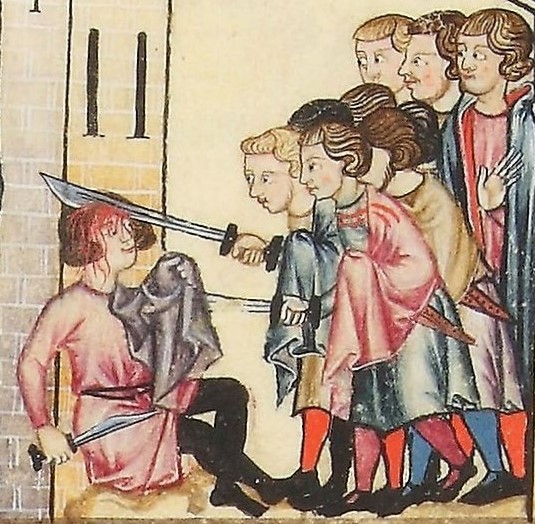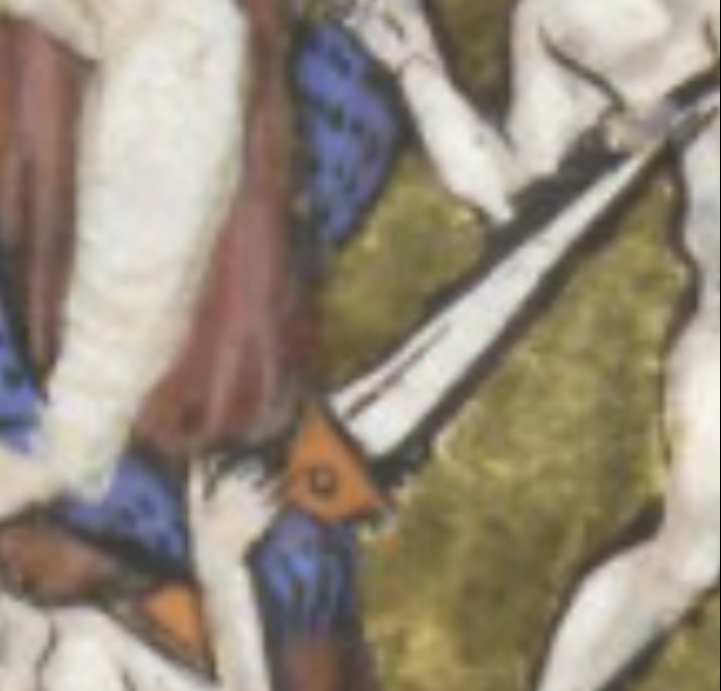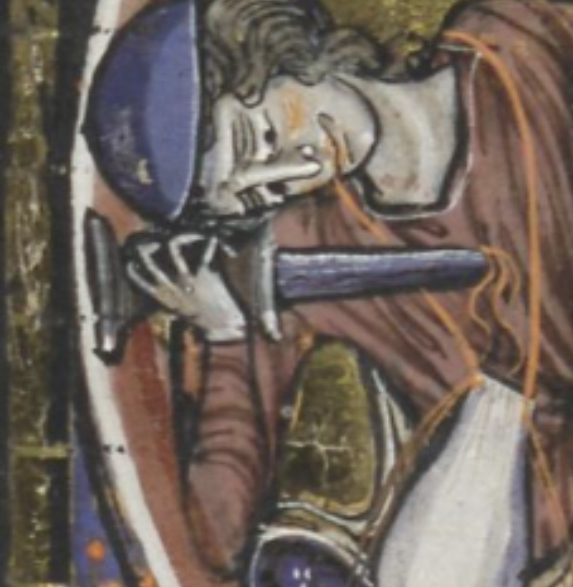Well you're welcome for the inspiration but I think you've paid it back 100 fold with all this. You've provided quite a service here (and perhaps you'll have helped many more than just me with your posts). I'm in your debt! I think that there is an interesting debate brought up in the latter part of your analysis regrading whether or not Italian baselards really do have an Swiss (Basel) origin. It could be, however, that its something in-between. It could be a foreign (Swiss) design that has been modified to become local. I think that maybe something like this happened with European ear daggers (they are inspired by designs from Muslim countries but modified into the form we would call an ear dagger) - hopefully I'm right about that and not making a fool of myself. But, if I am right, an Italian baselard as such never existed predominantly anywhere else until it existed in Italy (and then perhaps exported elsewhere like England).
I think on reflection I can kind of see how these different dagger forms might all be lumped together, but they are just so obviously different in their construction, I wonder if this isn't an accurate thing to do. I might try to take your lead, Chad, and start calling the Swiss/German baselards "Swiss daggers" (or Holbein daggers - depending on the form they take), and continue calling the Italian/English ones "baselards" just because there isn't a better term for it that I can find (even though it might be a misnomer if the Italian ones have an Italian, or partly Italian, origin...).
At least one of the 15th century manuscripts in German on fencing mentions the basilard (basler and various other spellings such as baselære).
The article by Claude Blair cited above has a document on pages 196 and 197 from 17 July 1375 where Francesco di Marco Datini buys big knives from Basel (choltella di basola) including medium and large basolardi with and without by-knives (choltellini). He purchased them in moderate quantities (by the dozen).
| Chad Arnow wrote: |
| Boccia et al doesn't seem to like the term baselard and mostly uses it unflatteringly ("some foreign scholars..."). When describing things, they much prefer "Double T" or they just call it a "dagger." Their origin theory for the Italian version is compelling and may explain why Italian/English examples are different from Germanic examples. The Bargello book uses "baselard" where I'd expect and "Swiss dagger" where English language sources might use Holbein. |
The article by Claude Blair cited above has a document on pages 196 and 197 from 17 July 1375 where Francesco di Marco Datini buys big knives from Basel (choltella di basola) including medium and large basolardi with and without by-knives (choltellini). He purchased them in moderate quantities (by the dozen).
Given the early images of pinned, slab-gripped, daggers and "falchions" from Alfonso X's manuscripts in Spain, I can't help but wonder if the origin isn't more Mediterranean than Swiss.
 Attachment: 144 KB
Attachment: 144 KB


| Mart Shearer wrote: |
| Given the early images of pinned, slab-gripped, daggers and "falchions" from Alfonso X's manuscripts in Spain, I can't help but wonder if the origin isn't more Mediterranean than Swiss. |
Matt, thanks for sharing that image. I’m buying more and more into the idea that the hilt construction of the true baselard isn’t terribly Swiss. :) So is the Swiss version a parroting of the silhouette of the Mediterranean version but with different construction or just a happy coincidence? We have both the period art Mart posted and Swiss examples from the late 13th century…
Scale-tanged knives were the latest fashion in the 14th century, and while I have not checked in Holtmann they probably appeared earlier in urbanized places like Italy than backwoods like England and Switzerland. So maybe the whittle-tanged baselards were a Swiss and South German interpretation of the new desire for big knives with a H-shaped hilt? The period 1250-1350 is not one of the areas of my expertise, and neither are Iberia or Switzerland.
Ada Bruhn Hoffmeyer might have written something on Spanish baselards.
Ada Bruhn Hoffmeyer might have written something on Spanish baselards.
The late 13th/early 14th century versions that we see in Switzerland have remarkably similar examples that are seen in England and Normandy in the early-mid 13th also. Most examples are seen in the Bible Moralisees of Northern France, but others are also found.
 Attachment: 335.9 KB
Attachment: 335.9 KB

Baselard - France, 1220; ONB Han 2554 Bible Moralisee

Baselard - France, 1220; ONB Han 2554 Bible Moralisee
Same source as above; Northern France
 Attachment: 314.41 KB
Attachment: 314.41 KB

Baselard - France, 1220; ONB Han 2554 Bible Moralisee

Baselard - France, 1220; ONB Han 2554 Bible Moralisee
A different Bible Moralisee; Northern France
 Attachment: 282.1 KB
Attachment: 282.1 KB

Baselard - France, 1220-1230; ÖNB Han. Cod. 1179 Bible Moralisee

Baselard - France, 1220-1230; ÖNB Han. Cod. 1179 Bible Moralisee
Baselard - England, 1250; Matthew Paris Life of St. Alban
 Attachment: 441.47 KB
Attachment: 441.47 KB
Baselard - England, 1250; Matthew Paris Life of St. Alban [ Download ]
Baselard - England, 1250; Matthew Paris Life of St. Alban [ Download ]
England, 13th Century; London Museum (Thames find). This is from Claude Blair’s work I believe, but would have to double check.
Page 2 of 2
You cannot post new topics in this forumYou cannot reply to topics in this forum
You cannot edit your posts in this forum
You cannot delete your posts in this forum
You cannot vote in polls in this forum
You cannot attach files in this forum
You can download files in this forum
All contents © Copyright 2003-2006 myArmoury.com — All rights reserved
Discussion forums powered by phpBB © The phpBB Group
Switch to the Full-featured Version of the forum
Discussion forums powered by phpBB © The phpBB Group
Switch to the Full-featured Version of the forum